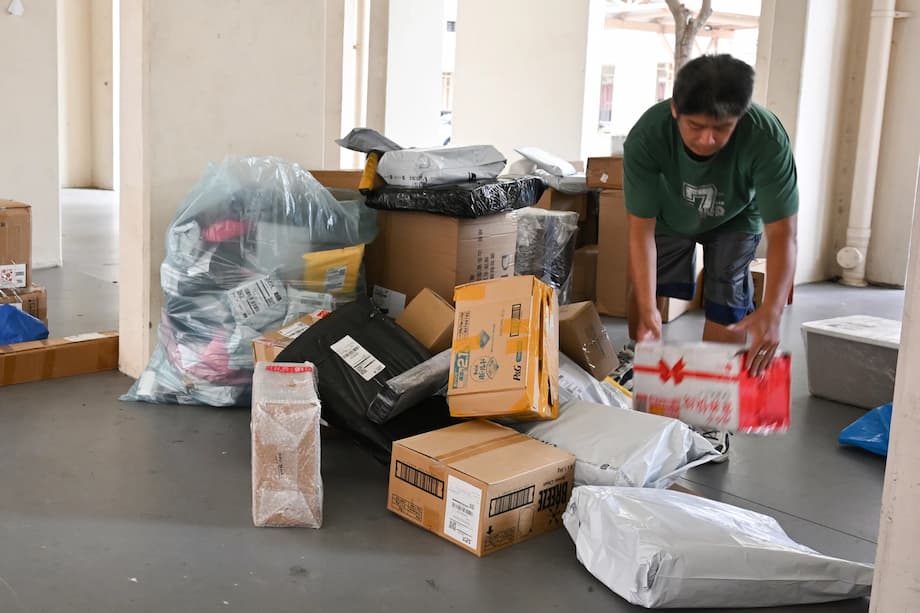Rising rents push brands online
After years of rapid digital adoption, Southeast Asia is entering a new stage of ecommerce where brands are becoming the main characters. The spark comes from outside the screen. Retail rents have climbed across many of the region’s prime shopping districts while fit out and labor costs also rise. Store portfolios still matter for visibility and trust, but the math is tightening. More brand owners are now shifting attention and budget to online channels where they can scale reach, test product mixes faster, and track return on investment in real time.
Platform operators have felt a different pressure. User numbers and order volumes surged during the pandemic, yet profits did not always keep up. Subsidy wars thinned margins and high delivery costs weighed on earnings. The new focus is on sustainable unit economics and smarter monetization tools. That shift aligns with what many brands want: a stable environment to build awareness, convert demand, and nurture loyalty without an endless race to the bottom on discounts.
The opportunity is substantial because brands are still underrepresented in the region’s online sales mix. Industry estimates show brands contributed under 30 percent of platform gross merchandise value (GMV, the total value of goods sold) in 2024. In China, brands account for more than half of platform GMV. The gap suggests Southeast Asia is only at the start of a brand led expansion online, aided by rising digital wallet usage, creator driven discovery, and better logistics coverage across cities and islands.
Market size and where growth is coming from
Ecommerce in Southeast Asia grew fivefold between 2016 and 2021. During that period the share of online in total retail sales moved from about 5 percent to roughly 20 percent. The pace has moderated since the pandemic surge, but the base is much larger and the consumer habit is set. In 2024 the region’s total ecommerce GMV reached about 145.2 billion dollars when counting both marketplace platforms and non platform channels such as brand owned sites and direct messaging commerce. Platform GMV stood near 128.4 billion dollars, up about 12 percent year on year, reflecting a deliberate move away from heavy subsidies toward healthier returns.
Penetration still has a long runway. Daily parcel volumes are immense, at roughly 43.6 million packages shipped per day in 2024, approaching levels seen in far larger markets. Projections from multiple industry sources point to continued expansion, with GMV potentially reaching around 230 billion dollars by the middle of this decade and rising toward the high 300 to low 400 billion dollar range by 2030 if current trends hold. The six largest economies in the region drive most of the volume, and Indonesia remains the heavyweight by scale.
Consumer behavior is shifting in ways that support brand growth. Marketplaces remain the top channel for product discovery, followed by social media and search. Video plays a central role in discovery and consideration, and live shopping is no longer a novelty. Payments are evolving quickly. Digital wallets and local online payment methods have gained share in every major market, although cash on delivery still appears in parts of Indonesia and Vietnam. These shifts simplify checkout and reduce friction for first time buyers, especially on mobile.
Platforms consolidate while brands under index
Consolidation at the top of the platform stack matters for brands. Three players now control the vast majority of platform GMV in Southeast Asia and handle most parcel volume. Shopee retains the lead in many markets, TikTok Shop has scaled rapidly through short video and live shopping, and Lazada has refocused on higher quality, branded assortment while improving monetization and technology. This concentration allows large investments in logistics, fraud prevention, recommendation engines, and seller tools that smaller platforms struggle to match.
At the same time the channel mix is broadening. Non platform ecommerce, including brand.com sites, multi brand retailers that sell online, social commerce, and messaging driven sales, added an estimated 16.8 billion dollars of GMV in 2024. Live commerce alone generated about 17.6 billion dollars, or roughly 14 percent of platform GMV, and when combined with other video led formats it now accounts for one fifth of platform sales. For brands, that means attention must be earned across feeds, streams, and storefronts rather than in a single marketplace shop window.
The under indexing of brands on platforms is the clearest signal of untapped upside. Less than one third of platform GMV in 2024 came from branded goods, compared to more than half in China. Apparel, lower priced electronics, and accessories still make up a large share of Southeast Asia’s online baskets, but the category mix is broadening to beauty, home, and even groceries. As platforms prioritize quality assortment, service level guarantees, and data driven ad tools, brands have more reasons to lean in.
Logistics make faster delivery possible
Logistics is the invisible engine behind the region’s ecommerce growth. Delivering to dense megacities, rural provinces, and archipelagos is hard. It requires localized networks, automation, and careful cost control. The past few years have seen major investments in sortation centers, route optimization, and service differentiation. Many logistics providers now offer end to end services from warehouse to doorstep, plus returns processing and after sales support.
Speed and reliability are the new differentiators. Surveys show only a minority of consumers are fully satisfied with delivery service, and a large majority say they will pay a bit more for dependable, on time delivery. Brands selling furniture, home appliances, and other bulky items need specialized handling and scheduled delivery options. Returns are also rising, especially in apparel and electronics. A smooth, transparent returns process has become a key reason consumers choose one seller over another.
Cross border flows are changing as well. Instead of direct injection of individual parcels from factories to consumers, more sellers and brands are shipping goods in bulk to local warehouses, then fulfilling from closer to the buyer. This B2B2C model cuts delivery times, improves compliance with local rules, and helps meet peak demand without stock outs. Meanwhile, platforms are bringing more logistics in house to secure speed and cost advantages. Independent delivery firms continue to scale across multiple countries, using regional sponsor models and automation to maintain efficiency, but many also face tight margins and pricing pressure. Regulators in some markets have examined courier selection practices on platforms to keep competition fair, and there has been debate over setting minimum delivery fees as the industry matures.
How Chinese and local brands compete
Competition between Chinese entrants, local champions, and global names is reshaping categories from beauty to home appliances. Chinese companies bring scale manufacturing, aggressive pricing, and playbooks honed on large domestic platforms. Local and international brands answer with stronger quality cues, distribution depth, and premium positioning. The result is a faster innovation cycle and a more dynamic online shelf.
Beauty gets a jolt
Chinese beauty brands have used creator led marketing, livestream selling, and sharp price points to win share, especially in mass color cosmetics. In Indonesia, a group of leading Chinese color cosmetics labels lifted their market share from low single digits in 2019 to the mid teens by 2024. Many keep prices in the 2 to 5 dollar range, closely matched to Gen Z spending power in markets like Indonesia and Thailand. Some brands list hundreds of stock keeping units per store on marketplaces, supported by customer to manufacturer models that can turn local feedback into new shades or textures quickly.
Appliances move fast online
Home appliances have also shifted online. Chinese makers increased share across several subcategories over the past decade, with strong gains in vacuum cleaners, washing machines, and microwave ovens. Competitive pricing and consistent product updates helped them carve out space from Japanese and South Korean incumbents. Localized operations, regional assembly, and faster cross border logistics have improved after sales service and delivery speed, making larger items more practical to purchase online. Local brands are responding by emphasizing durability, energy efficiency, and service, while doubling down on online education content and installation support.
The new playbook for brands
A brand led phase of ecommerce growth does not mean simply opening a marketplace store and waiting for traffic. It requires a channel strategy that reflects how Southeast Asians discover, evaluate, and buy across mobile, social, marketplaces, and brand owned channels. The most successful teams integrate content, media, and retail operations while keeping a tight handle on unit economics and service levels.
Build a presence on marketplaces and your own store
Marketplaces still dominate shopper attention, but non platform channels are rising fast. Brands that pair strong marketplace operations with a clean, conversion ready brand.com site can capture both impulse traffic and loyal repeat buyers. Inventory visibility, consistent pricing, and unified customer service keep the experience coherent for shoppers who hop between channels.
Master live and video commerce
Video and live formats now drive roughly one fifth of platform GMV. That scale justifies always on programming rather than one off stunts. Brands are investing in short form tutorials, creator collaborations, and scheduled live shows that anchor weekly habit. Clear storytelling, limited time bundles, and instant fulfillment signals help convert viewers into buyers.
Invest in first party data and AI
Ad costs on major social and search channels have risen in many markets. That pushes brands to use first party data to target more precisely and measure more accurately. Marketplace native ad tools, on platform creatives, and retail media inside ecosystems like Shopee, Lazada, and TikTok give access to shoppers already in a buying mindset. New marketplace first solutions promise end to end attribution inside these ecosystems without extra tracking tags, making it easier to connect content to cart and to scale what works. AI systems are increasingly used to optimize listings, bids, creative variations, and even customer service scripts.
Balance performance and brand building
Discount festivals can spike short term sales, but over reliance on promotions can erode margins and train customers to wait. A healthier mix blends performance ads with consistent brand storytelling, cultural relevance, and distinctive assets that build memory over time. Many teams are spreading spend across more content platforms and creator segments, leaning into authenticity and community rather than only chasing the steepest discount badge.
Fix payments, returns, and service
Checkout choice is now a brand asset. Digital wallets and local online payments lead across the region, while credit cards rank higher in more affluent segments. Cash on delivery still matters in some areas but carries higher risk and cost. Clear returns windows, self service tracking, and proactive delivery updates reduce churn and boost repeat rates. For cross border items, placing inventory in local warehouses can shorten delivery times and simplify compliance.
Country snapshots
Indonesia. The region’s largest market contributed about 44 percent of platform GMV in 2024. Growth slowed compared with earlier years, yet the absolute scale is unmatched. TikTok Shop completed its integration with Tokopedia, live commerce keeps rising, and social discovery is strong. Outside Java, logistics investments and localized content are opening new pockets of demand. Payment preferences remain diverse, with digital wallets growing but cash still present for some orders.
Thailand. One of the fastest growing markets in 2024, with platform GMV rising more than 20 percent year on year. Live shopping is mainstream and cross border selection from China is deep. Beauty, fashion, and home categories benefit from creator ecosystems and reliable next day delivery options in major cities.
Malaysia. Strong year on year gains near 20 percent and high digital wallet penetration make checkout smooth. Consumers are comfortable shopping across marketplaces and brand sites. Online groceries and health and beauty categories show steady momentum, supported by improving cold chain and last mile capabilities.
Vietnam. Platform GMV reached around 16 billion dollars in 2024, with healthy double digit growth. The country’s role as a manufacturing hub supports faster regional supply chains, while shoppers engage heavily with social and short video commerce. Logistics infrastructure continues to expand beyond the biggest urban centers.
Philippines. Ecommerce adoption continues to climb as smartphone penetration deepens. Island geography makes delivery complex and costly, yet logistics networks are scaling and parcel volumes are high. Beauty, small electronics, and household essentials are popular online, and creators play an outsized role in discovery.
Singapore. Small in population but high in GMV per capita. Shoppers expect premium service with tight delivery windows and easy returns. Cross border purchases are common, and brands use Singapore as a regional hub for data, operations, and testing new experiences. Retail rents are among the highest in the region, which pushes even premium brands to invest more online.
Risks, regulation, and what could slow growth
Three risks stand out. First, concentration and competitive dynamics. As platforms bring more logistics in house and adjust seller policies, brands and delivery partners can face sudden changes in visibility or volume. Competition regulators in parts of the region have already examined platform practices around courier choice and fairness. Second, cost pressure. Delivery fees have reached thin margins for many couriers, while media costs have increased. Brands that rely too heavily on discounts and subsidized shipping may face weaker profits if costs climb further.
Third, operational friction. Returns processing, customer abuse, and fraud can erode margins if not tightly controlled. Payment fragmentation also remains a challenge in some countries, which can hurt conversion. Supply chains are diversifying across Southeast Asia, yet heavy dependence on a single sourcing country or long cross border flows can create delays during shocks. Teams that diversify supply, build flexible fulfillment, and deepen local talent pools will be better positioned to manage these shocks.
Highlights
- Retail rents are rising across key Southeast Asian cities, pushing brands to scale ecommerce channels where returns are more measurable.
- Total ecommerce GMV in 2024 reached about 145.2 billion dollars across platforms and non platform channels, with platform GMV near 128.4 billion dollars.
- Daily parcel shipments hit roughly 43.6 million in 2024, showing significant logistics capacity across the region.
- Three platforms control most of regional GMV, while live and video commerce account for about 20 percent of platform sales.
- Brands represent under 30 percent of platform GMV in Southeast Asia, compared with more than half in China, leaving headroom for brand led growth.
- Thailand and Malaysia led growth in 2024, while Indonesia remained the largest market by scale.
- Chinese brands gained share in beauty and home appliances, while local and global brands respond with quality, service, and premium positioning.
- Digital wallets and local online payments dominate checkouts, though cash on delivery persists in parts of the region.
- Cross border models are shifting toward local warehousing to cut delivery times and improve compliance.
- Key risks include platform concentration, rising media and logistics costs, and operational friction from returns and payment fragmentation.




